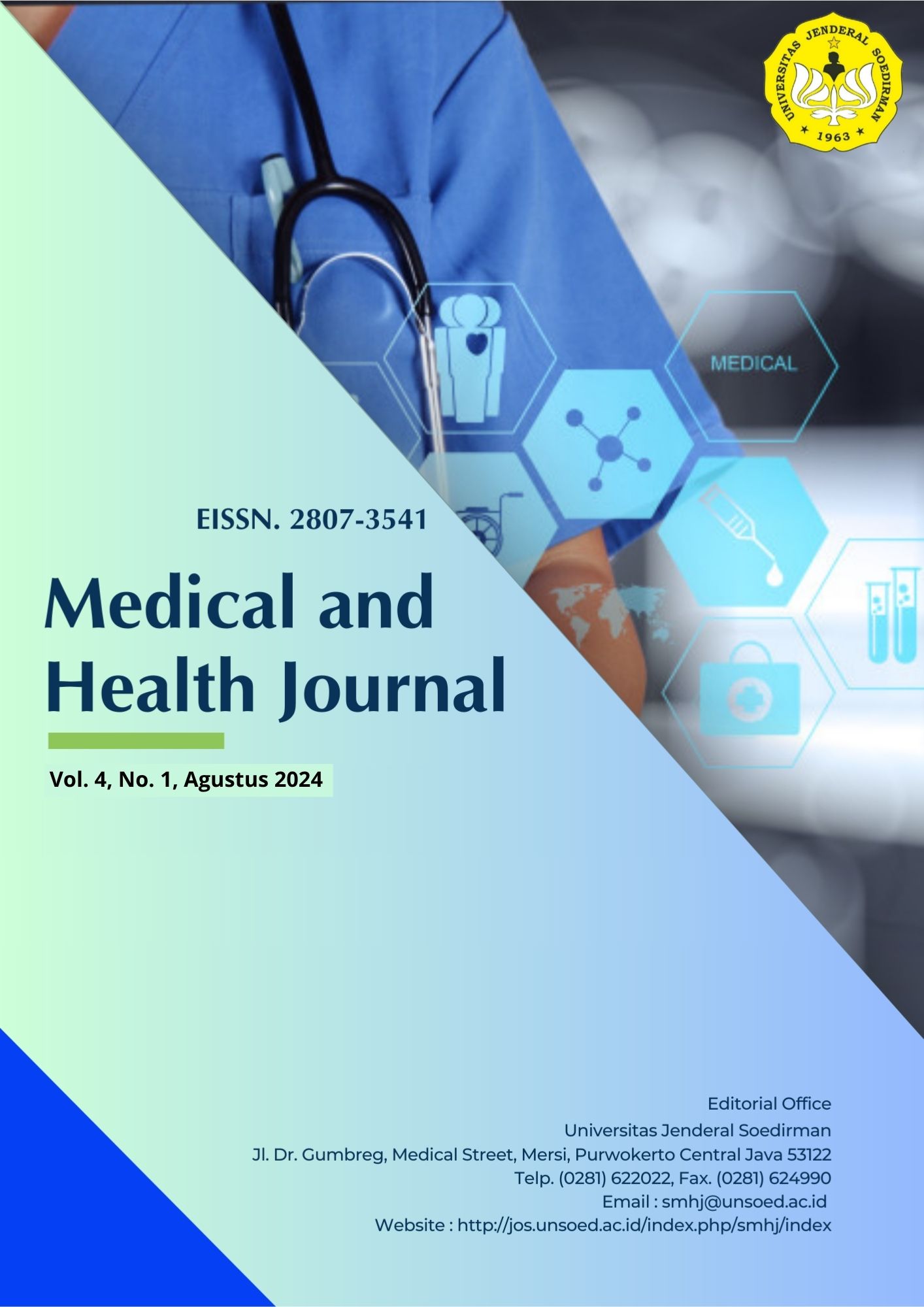COMPARISON OF CHLORAMPHENICOL, ERYTHROMYCIN AND FORMALIN WITH DIFFERENT DOSES AGAINST THE INHIBITION OF THE GROWTH OF Clostridium perfringens
Evaluation Study Method of Preserving Bodies
Abstract
Death is the cessation of function of the circulatory system and respiratory system, or brain stem death has occurred. Decomposition is natural process that occur shortly after death. The main bacteria involved in the decomposition process is Clostridium perfringens. The process of decomposition sometimes need to be inhibited by the preservation bodies. Preserving the corpse is a medical procedure for the provision of certain chemicals such as formalin or can used a broad spectrum antibiotic chloramphenicol and erytromicine. This study aims to test the effectiveness of various doses of chloramphenicol, erytromicine and formaline in inhibiting the growth of Clostridium perfringens. This was an experimental study with post test only and contol group design. The treatment of various doses of chloramphenicol 0,25 µg/ml, 0,5 µg/ml, 1 µg/ml, 2 µg/ml, and 4 µg/ml; Erythromycin doses were 0,2 µg/mL, 0,4 µg/mL, 0,8 µg/mL, 1,6 µg/mL, and 3,2 µg/mL and formalin was given at 2%, 4%, 6%, 8%, and 10% in liquid medium Nutrient Broth. Incubated for 24 hours at 37 ° C, and then planted in agar plate wiith spread plate method to determine the growth of bacteria. Bacterial growth was calculated by colony counter, then the percentage inhibition was determined. Data were analyzed using parametric tests One Way Annova and Post Hoc Test. The effective concentration was determined by Minimum Inhibitory Concentration 50 (MIC50). Data were analyzed using One Way Annova test, showed p value=0,009 (p<0,05) which meant that there were significant difference between the number of colony inhibition with number of doses given to C. perfringens, and the results of Post Hoc Test concentration of formaldehyde 10% and 8% had the lowest number of colonies or has the ability to inhibit the growth of c. perfringens bacteria most of 80% and 63%, so it can be said to be effective concentration (MIC50) at 8% formalin treatment with inhibition of growth of 63%.






